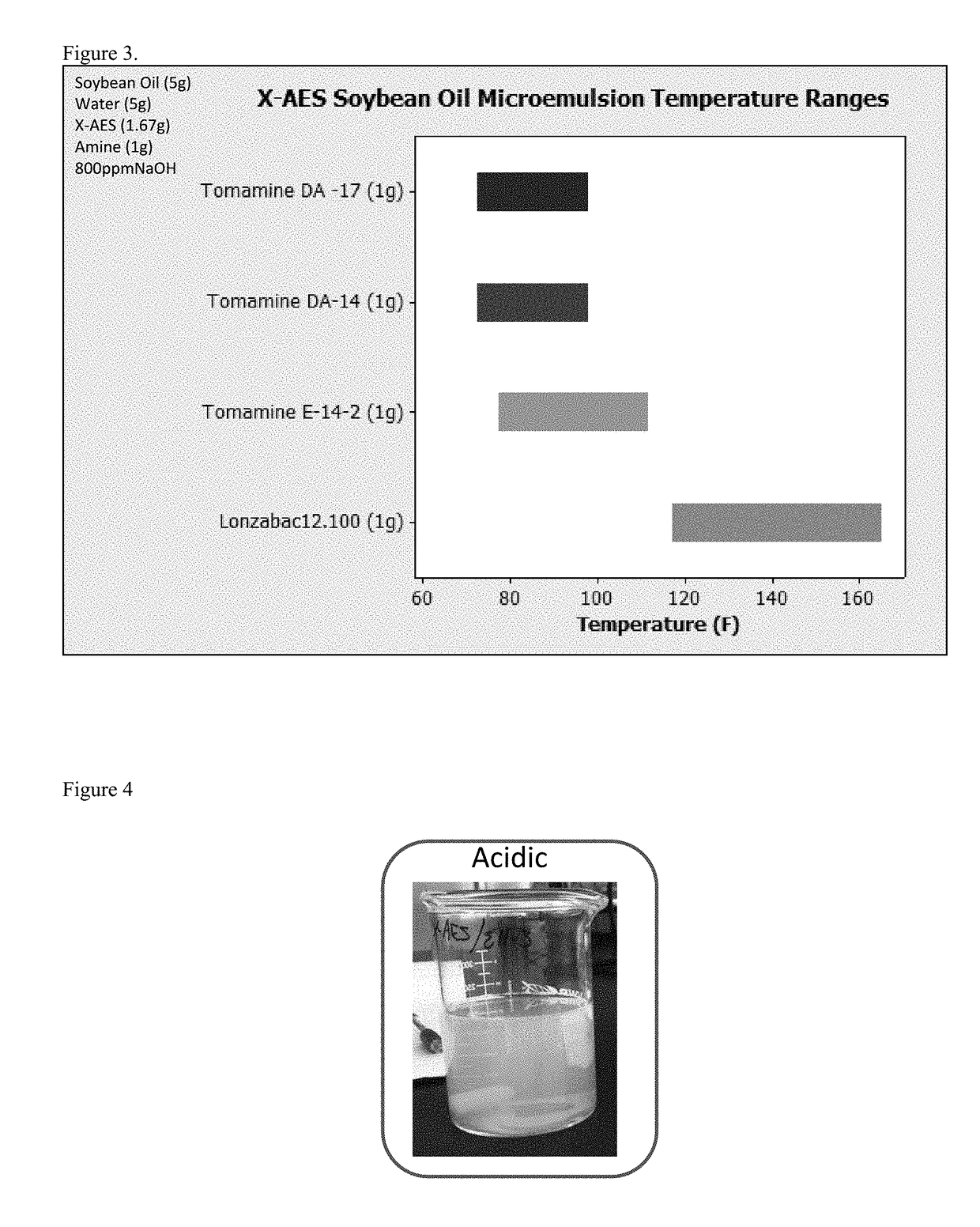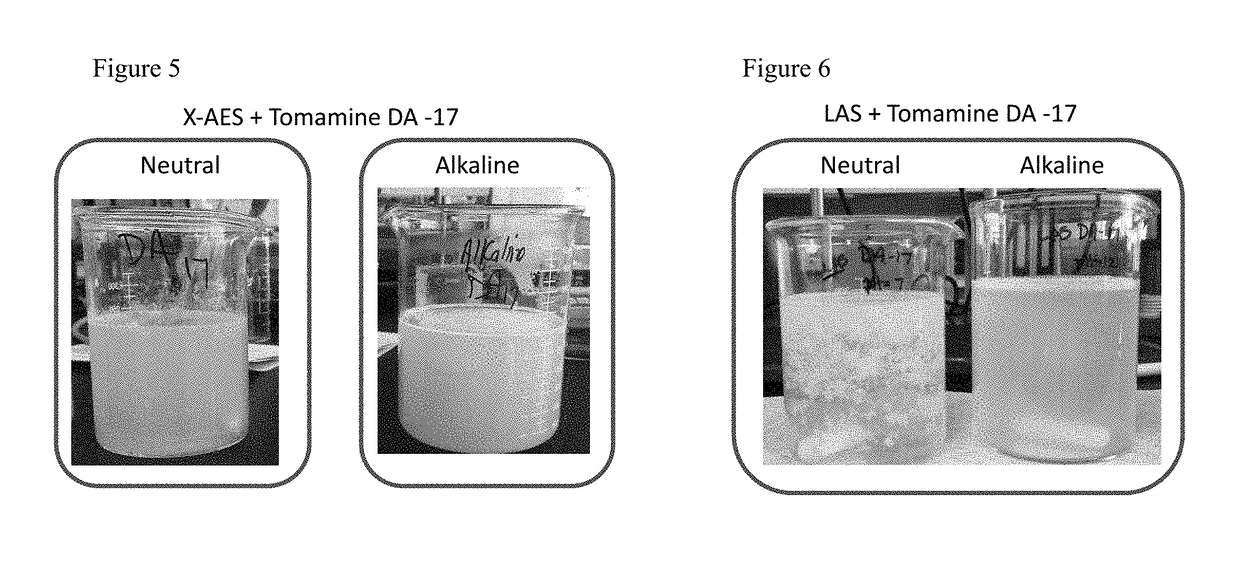Cleaning compositions employing extended chain anionic surfactants
a technology of surfactants and cleaning compositions, applied in the direction of non-ionic surface active compounds, surface-active detergent compositions, detergent compositions, etc., can solve the problems of difficult removal of non-transfats, high levels of strongly emulsified oil, and difficult application, so as to reduce energy consumption and total water use, good results
- Summary
- Abstract
- Description
- Claims
- Application Information
AI Technical Summary
Benefits of technology
Problems solved by technology
Method used
Image
Examples
example 1
Amine Surfactants as “Universal” Co-Surfactant for Anioinic Extended Surfactants for Multiple Oil Phases:
[0161]Table 1 summarizes microemulsion data obtained for a surfactant package based on 1.6667 parts X-AES extended anionic surfactant C12-14—(PO)16-(EO)2-sulfate to / 1 part Tomamine DA-14, and 0.75 part Tomadol 91-2.5 (all actives). This composition forms clear, flow able microemulsions with 3 entire different oil phases—soybean oil, mineral oil, and motor oil, and also mixture of soybean oil and mineral oil, from room temperature to 120° F.
[0162]FIG. 2 is a photograph of the microemulsions formed. One can see that the solutions are stable with no precipitation. For mineral oil, soybean oil, a mixture of the two and even motor oil. One can see that synergistic combinations of an extended anionic sulfate surfactant (X-AES) with amine surfactants form versatile microemulsification platform.
[0163]FIG. 3 is a graph summarizing soybean oil microemulsion data for surfactant packages of...
example 2
[0164]Strategic Emulsion Breaking with pH Effect on the Amine Co-Surfactants
[0165]1500 ppm Active Soybean oil microemulsion with X-AES as main surfactant and Ecosurf EH-3 as (non-ionic) co-surfactant was created according to the invention. 5 gpg Water at 120 F was used for testing. The results are shown in FIG. 4. One can see that the microemulsion remains stable even when adjusted from alkaline to acidic conditions.
[0166]Next 1500 ppm Active Soybean bean oil was used with 5 gpg Water at 120° F. The results are shown in photographs as FIGS. 5 and 6 at time zero. In contrast to use of the nonionic cosurfactant, when amine co-surfactants are used in the microemulsions with X-AES, the emulsions were stable at alkaline conditions but instantly separated under acidic or neutral pH.
[0167]There exists an antagonist interaction between long chain sulfates and the protonated amine-co-surfactants. Further, LAS linear alkylbenzene sulfonates+Tomamine DA-17 cannot form microemulsion with soybea...
PUM
 Login to View More
Login to View More Abstract
Description
Claims
Application Information
 Login to View More
Login to View More - R&D
- Intellectual Property
- Life Sciences
- Materials
- Tech Scout
- Unparalleled Data Quality
- Higher Quality Content
- 60% Fewer Hallucinations
Browse by: Latest US Patents, China's latest patents, Technical Efficacy Thesaurus, Application Domain, Technology Topic, Popular Technical Reports.
© 2025 PatSnap. All rights reserved.Legal|Privacy policy|Modern Slavery Act Transparency Statement|Sitemap|About US| Contact US: help@patsnap.com



